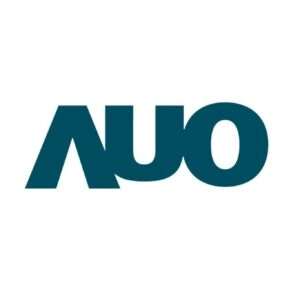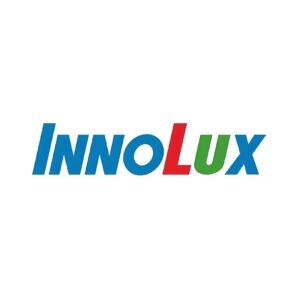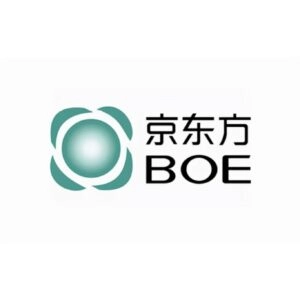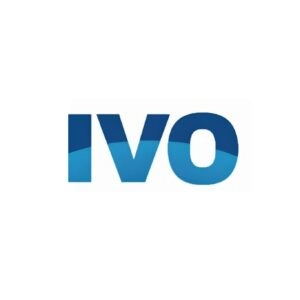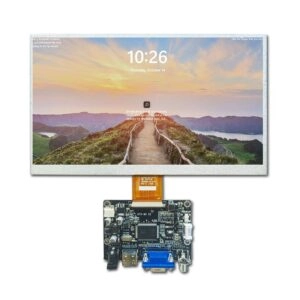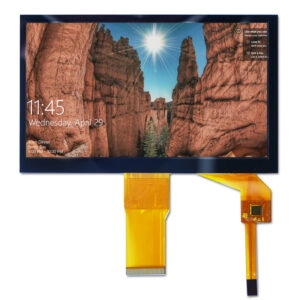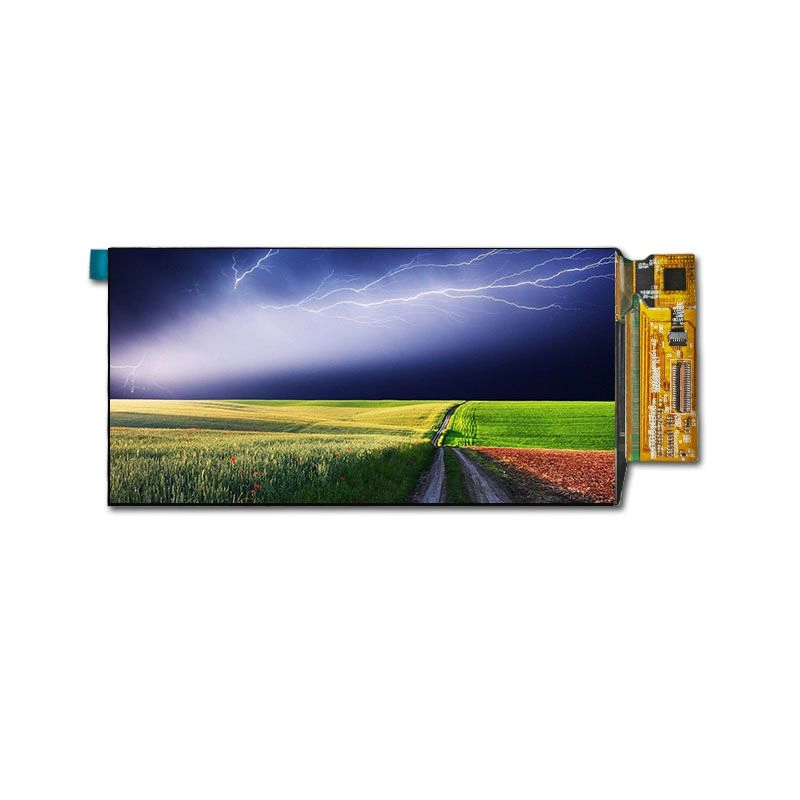What Does AMOLED Mean?
Amoled stands for Active-Matrix Organic Light-Emitting Diode. The “active-matrix” part talks about the control system. It uses a thin-film transistor (TFT) layer. This layer manages the pixels. When a picture shows up, it appears line by line. Each pixel is controlled on its own. A storage capacitor in the TFT layer helps with this. This setup lets AMOLED screens work really well. It makes them great for big screens and sharp images.
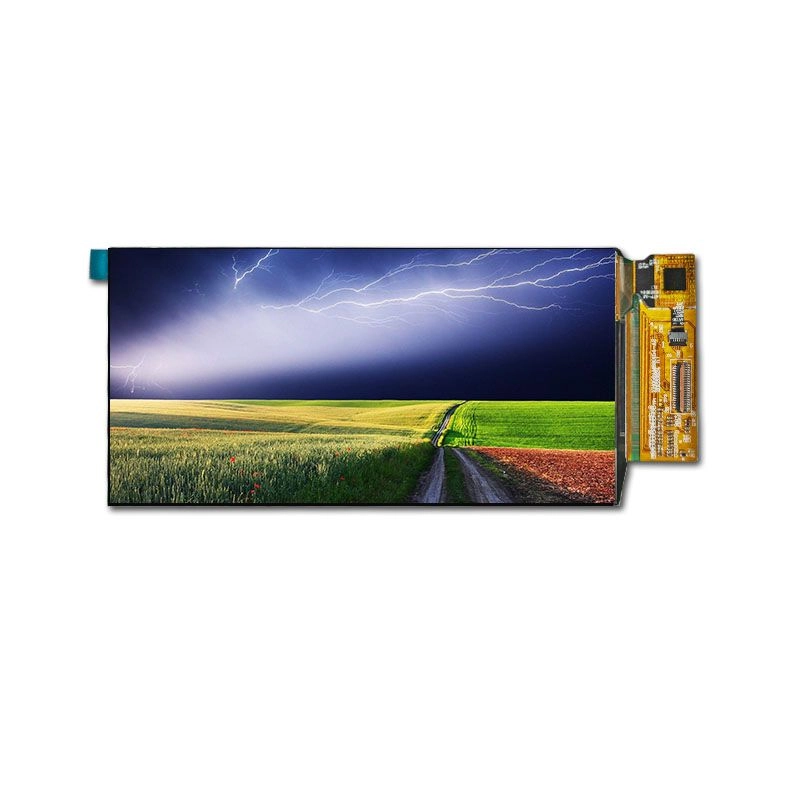
The “OLED” part means Organic Light-Emitting Diode tech. OLEDs use organic stuff that glows when electricity flows through. Unlike old LCD screens that need a backlight, OLEDs make their own light. This makes screens thinner and bendable. They show better colors and stronger contrast. AMOLED mixes OLED perks with active-matrix tech. This gives awesome picture quality.
AMOLEDs Today
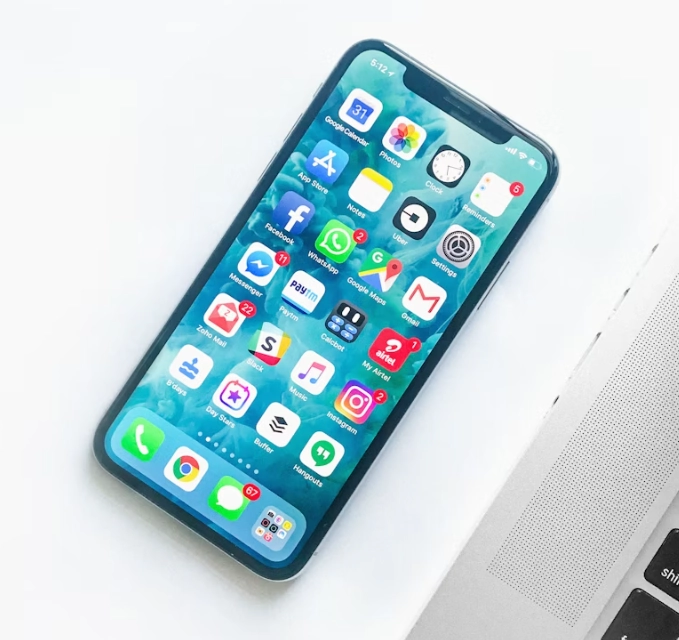
AMOLED screens are used in many places now. They rule the phone market. Over half of phones use AMOLED, including top models from Samsung and Apple. For example, all new iPhone models have AMOLED tech.
Beyond phones, AMOLED screens are in other gadgets too. Smartwatches, like the Apple Watch, use them. They save power and show bright pictures. Tablets and laptops are starting to use AMOLED panels. These give clearer images and wider viewing angles than LCDs.
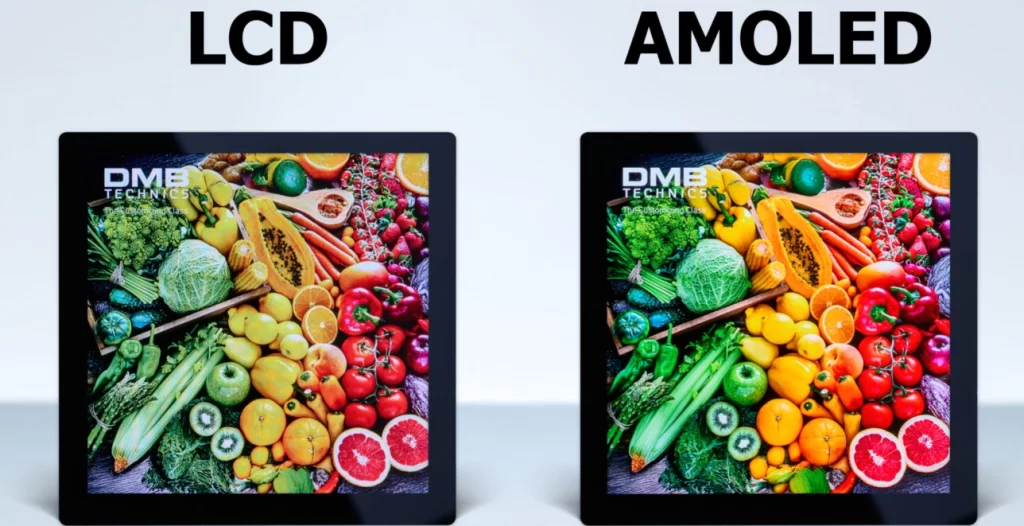
The car industry loves AMOLED tech too. Fancy cars now have AMOLED dashboards and entertainment screens. These screens are bendable and show sharp images. Also, new ideas like foldable and rollable screens are hitting the market. They show how flexible AMOLED screens are.
AMOLEDs aren’t just for everyday gadgets. They’re used in special jobs too. Medical tools need clear images. VR headsets need immersive screens. AMOLED’s flexibility keeps growing its market reach.
AMOLED vs PMOLED
PMOLED means Passive-Matrix OLED. It’s a simpler option than AMOLED. But it has big limits. PMOLEDs don’t have a storage capacitor in their control system. So, each pixel line turns off when the screen moves to the next line. This makes the screen less bright. Each row is only on for a short time.
To make up for low brightness, PMOLEDs need more power. But this shortens the life of the organic stuff in the screen. It also uses more energy. Because of this, PMOLEDs are small and low-resolution. Most are 1 to 3 inches wide.
Due to these limits, PMOLEDs are used for simple screens. Think of small displays on fitness trackers or basic gadgets. Cost matters more than picture quality here.
On the other hand, AMOLED shines in performance and size. Its active-matrix setup keeps brightness steady across all pixels. It allows bigger screens and sharper images. This makes AMOLED perfect for phones, TVs, and gaming monitors.
PMOLED is cheap for small, simple screens. But AMOLED is the top pick for fancy devices. It gives unmatched picture quality and works in many industries.
Looking to Buy AMOLED Displays? Choose Miqidisplay
미키디스플레이 is a trusted name for advanced screen tech. They have over 20 years of know-how. They focus on top-quality AMOLED screens. These fit many industry needs. Their products are reliable and meet global rules like ISO-9001 and ISO-14001 certifications. Whether you need tiny AMOLED screens for watches or big panels for car consoles, Miqidisplay has lots of choices.
AMOLEDs on the market go from small 1-inch screens for smartwatches to huge 97-inch TV panels. 미키디스플레이 offers custom options. These include flexible setups like SPI, MIPI, or I2C. They work with many uses. Their engineering team has over 20 years of design experience. They give real-time help and custom solutions for your projects.
The company runs its own factories in Shenzhen and Hangzhou. This ensures fast delivery and a steady supply. With over 4,000 SKUs for sale, Miqidisplay is a one-stop shop for AMOLED screen needs.
The Latest AMOLED News
AMOLED screens are used in lots of gadgets today. They’re super common in phones. Recent reports say over 63% of phones shipped in Q1 2025 had AMOLED tech. This rise comes from Chinese makers and big brands like Samsung and Apple using flexible AMOLEDs.
In cars, NIO launched an updated ET5 smart electric sedan. It has a 15.6″ AMOLED screen. This shows how AMOLED fits high-definition car dashboards. Also, foldable AMOLED panels are getting popular. Samsung is boosting production for its Galaxy Z Flip 7 and Fold 7 series.
Flexible OLED screens are also big in laptops. LG Display’s foldable 13.3-inch laptop panel is listed on the OLED Marketplace. It offers new ideas for portable computers. These steps show AMOLED’s flexibility and growing demand across industries.
자주 묻는 질문
What is the difference between AMOLED and PMOLED?
AMOLED uses an active-matrix backplane with storage capacitors. This gives high performance for bigger screens with sharp images. PMOLED lacks these features. It has lower brightness and efficiency. PMOLEDs are cheap for small screens like fitness trackers. AMOLED is better for phones, TVs, and more with great picture quality.
Why choose Miqidisplay for AMOLED displays?
Miqidisplay offers tons of custom options. Their team has over 20 years of experience. Their products go through strict quality checks. They also give real-time help for questions and after-sales support.
Are Miqidisplay’s products certified?
Yes, Miqidisplay’s factories have TS-16949, ISO-9001, and ISO-14001 certifications. Their products meet global rules like CE and RoHS.
Can I get custom AMOLED solutions from Miqidisplay?
Yes! Miqidisplay specializes in custom displays. They offer changes like interface setups (HDMI/USB), custom shapes, cover glass, and more to fit your needs.
How do I place an order or inquire about products?
Contact their sales team by email or live chat on their website. For custom projects, send your needs online. Their experts will give a detailed plan within 48 hours.
